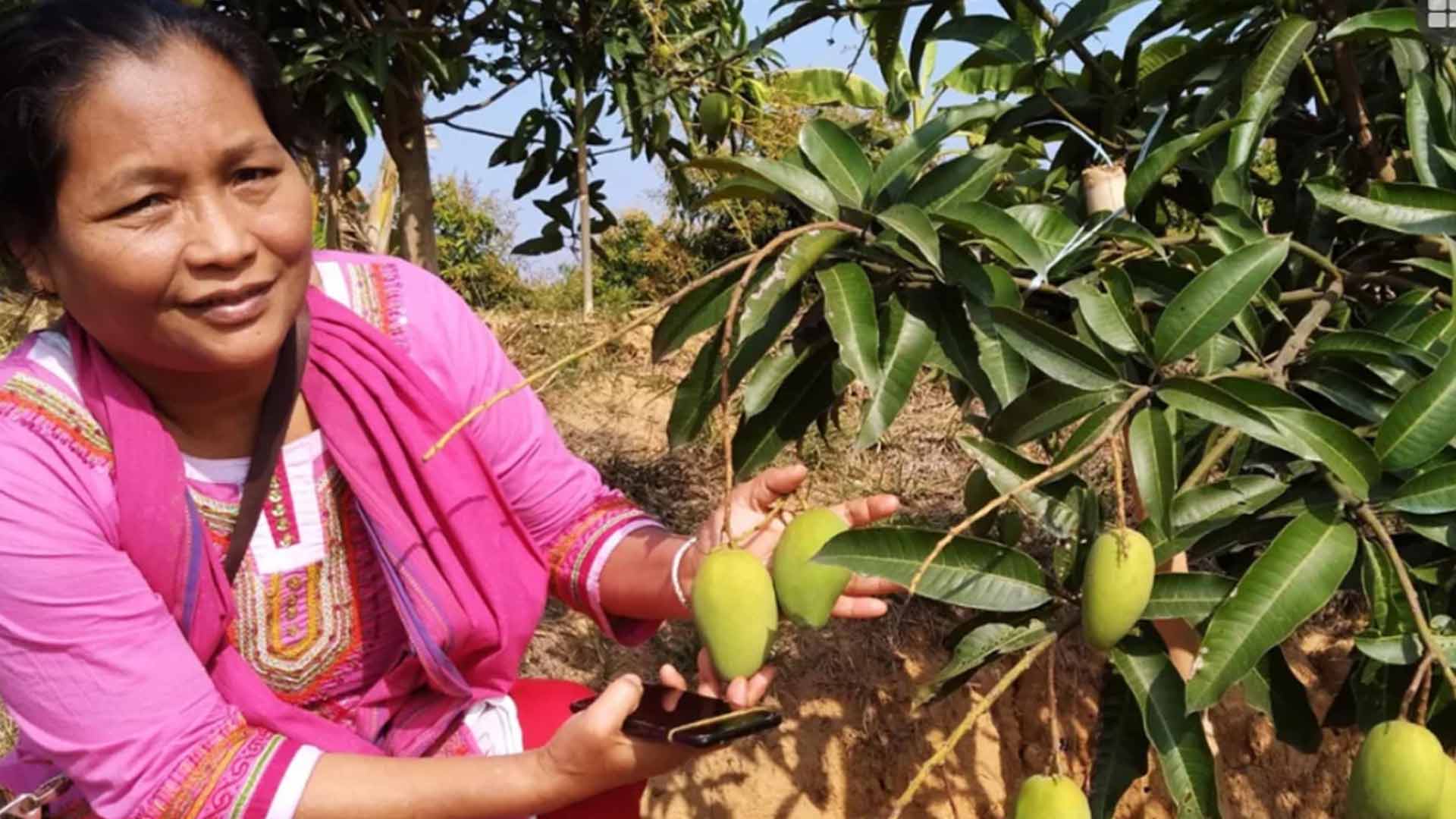MA AUNG MARMA
Amidst the silence, a quiet revolution has taken place. The once barren slopes of the forests now thrive with abundant mango orchards. The sight of dozens of mangos hanging in bunches from the ceiling is a magnificent testament to the success of this transformation. In the past, eating mountain mangoes was impossible because of a lack of insecticides and proper care, but now, with the advancement of mango farming, everything has changed. The highlands are now as feasible for mango farming as the plains. Every year, hill mango growers discover that their yields are rising and their income is increasing with newfound success. The transformation has not only brought the sweet taste of mangoes to the hillsides but has also changed the lives of the hill mango growers for the better.Farmers in hilly districts have revolutionised mangoes.
Mango cultivation has transformed hilly areas, benefiting the local people. The hilly areas of Rajshahi and Chapainawabganj have become renowned for producing exceptional mangoes. With government support, farmers in these highlands have successfully grown better varieties of mangoes. They have converted the uncultivated highlands of the hills into commercially planned mango farms, resulting in improved mango varieties. This achievement is truly commendable.
Previously, dense forests or meadows with hummocks supported sugarcane, but now a variety of mango trees, including Amrapali, adorn the landscape. The three hill districts of Khagrachari, Rangamati, and Bandarban have different-sized mango groves that are catching people’s attention. Mangoes are considered one of the world’s most expensive fruits, with the Japanese Miyazaki variety growing on hillsides alongside a variety of native and imported mangoes. Meanwhile, the Indian Amrapali mango variety dominates the Chittagong Hill Tracts in Bangladesh.
Out of all the hill districts, Bandarban has the most mango orchards. This area has many large commercial agro-farms with gardens. The Rajshahi district, also known as the Mango district, is slightly behind the hill districts. Hill districts will soon be able to produce mangoes on par with the Rajshahi division, claim agricultural experts. From 18 thousand hectares of land in the Rajshahi district, the Department of Agriculture has set a target of producing 2 lakh, 15 thousand, and 100 metric tonnes of mangoes this year. With this goal, mango production is the focus.
But this year, three hill districts have grown over thirteen thousand, three hundred and forty-two hectares of high terrain. The target for mango production is one lakh and fifty thousand metric tonnes. s. Among them are around 35,000 metric tonnes dispersed over 3,369 hectares of land in Khagrachari, 26,000 312 metric tonnes dispersed over 2,392 hectares in Rangamati, and about 90,000 metric tonnes dispersed over 7,581 hectares in Bandarban.
The Amrapali mango plantation emerged in the hillsides in 1998–1999 as part of the Kalikapur Model Project. The CThe Chittagong Hill Tracts Development Board runs an initiative that provides farmers with free seedlings, fertilisers, and other supplies to encourage them to grow mangoes. Gardens are progressively spreading because of their pleasant taste, quick production, and strong market demand. A single initiA single initiative at the time led to the establishment of hundreds of acres of sugarcane plantations in this region. AccorAccording people are interested in mango cultivation since it yields more and is more profitable, claims Nasir Uddin Chowdhury, Additional Deputy Director of the Agricultural Extension Department in Chittagong.
The cultivation of mangoes has significantly improved the economic conditions of the poor people living in hilly regions, especially those belonging to small ethnic groups.
This year, the yield at Khagrachari has been much higher than that of Bandarban and Rangamati combined. The mangoes from this area are transported to several flat districts, including Chittagong and Dhaka, on the opposite side of the mountainous regions. All varieties of mangoes, including Amrapali, Mallika, Rangui and Bari-4, have been fruitful this year. During the field inspections of several mango plantations, it was observed that the farmers were gathering their family members to help them pick mangoes from the trees. On average, every mango tree produces fifty kilograms of fruit. Amrapali harvesting begins in the first week of this month.
In Khagrachari, Amrapali is sold wholesale for Tk 45-50 per kilogram and retail for Tk 55-60 per kilogram. The majority of mangoes sold to wholesalers in Dhaka, Chittagong, Feni, and Comilla originate from this garden. This year, Mango Bikikini will be accessible online. The growers do not treat orchard-grown mangoes with formalin or any other dangerous chemicals. Mangoes cultivated in this area are in high demand since they are free from toxins.
Due to the perfect soil and temperature for their growth, hilly areas can produce a wide variety of mangoes. Building cold storage facilities and processing industries for mangoes is crucial to maximize the utilization of the mangoes cultivated in the hills.

